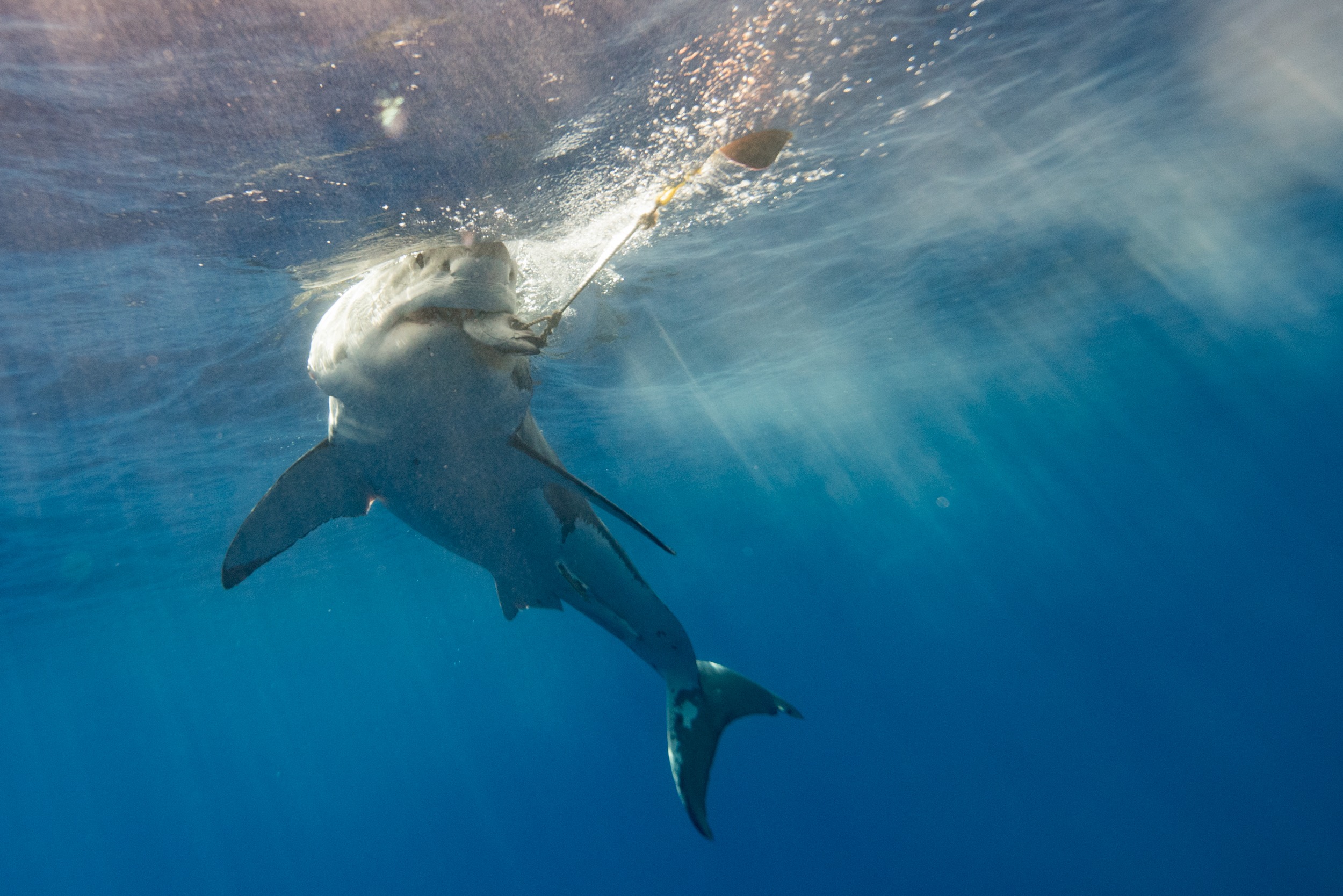Carlos Gauna, a wildlife photographer and videographer, has unveiled a groundbreaking discovery in shark science – the first-ever recorded footage of an infant great white shark shortly after its birth.
Gauna, driven by his passion to unravel the “secret lives of sharks,” embarked on numerous expeditions, spending hours observing these apex predators.
On July 9 of the previous year, he stumbled upon a gathering of unusually large sharks during his exploration of the Santa Barbara area, prompting curiosity about their activities.
Intrigued by the possibility of witnessing great white shark births, a phenomenon largely unknown to the scientific community, Gauna, in collaboration with University of California, Riverside, biology doctoral student Phillip Sternes, initiated research.

Miles off-coast Mexico (Credits: The Sun)
Despite conventional wisdom suggesting that white sharks give birth in deeper waters, Gauna persisted in his investigation, fueled by the unique shark activity he observed.
Using the penultimate battery in his drone, Gauna and Sternes observed a significant shark submerging around 1,000 feet from the shore. Shortly thereafter, a small, nearly entirely white shark emerged from the same spot.
Initially perceived as potentially albino, closer examination through video playback revealed a white film sloughing off the shark – a phenomenon Gauna believes to be the shedding of intrauterine milk, a crucial moment in the newborn shark’s development.
While some scientists suggested a skin condition as an explanation, Gauna, whose findings underwent peer review and were published in the journal Environmental Biology of Fishes, contends that the observed behavior aligns more with the shedding of uterine milk.
The size, shape, and unique dorsal fin of the shark and the presence of pregnant sharks in the area led Gauna to conclude that it was indeed a newborn great white shark.
Capturing live births in the ocean is a rare feat, and Gauna views this discovery as a “key component” for shark researchers. The vulnerability of great whites, classified on the International Union for Conservation of Nature Red List of Threatened Species, underscores the significance of such findings.
Gauna advocates for a shift in research focus, suggesting scientists should explore closer to the shore rather than exclusively in deep, offshore waters.
His dedication to shark research stems from a lifelong fascination with these creatures. Witnessing harm inflicted on sharks, such as boat collisions and fishing-related incidents, has fueled Gauna’s commitment to their protection.
He envisions continued exploration of sharks’ enigmatic and majestic world, emphasizing the need for research and conservation efforts to safeguard these curious, calm, and calculating creatures.























